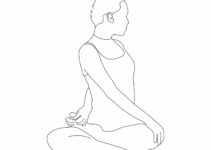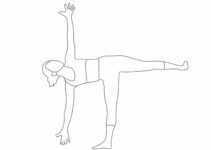What is Shavasana?
Shavasana (शवासन) is a Sanskrit word comprised of Shava (शव) means dead body and asana indicates posture. That’s why it is known as the corpse pose. It is also known as mitrasana or dead man pose. The asana is pronounced as Shuv-vah-sana. If its origin is traced, it is the Hatha Yoga Pradipika book where it was mentioned first. It is one of the most effective yoga poses used for relaxation and meditation after the end of a yoga session. The asana can be practised when somebody feels tired and needs rejuvenation. It is known as the dead man pose mitrasana or corpse pose.
Steps: how to do Shavasana

- First of all, lie flat comfortably on your back.
- Try to make your neck and shoulder muscles relax.
- Rest your arm on each side of your body and have a gap as wide as a mat between your legs.
- Hand should face upward.
- Eyes should be closed.
- Now, try to feel your body and its parts.
- Try to make synchronisation between your body and breathing.
- It can be practiced between 5-10 minutes. It can also be practised for 20-30 minutes.
Shavasana benefits
- Meditation: Shavasana is the best yoga pose for relaxation and meditation, helping to rejuvenate the molecular aspects of the body, like cells and tissues.
- Calms the body: It helps to make the body and mind fresh & afresh.
- Stress: It is one of the essential yoga poses to make the body stress-free.
- Nervous system: It is highly beneficial to the nervous system.
- Blood pressure: It is good to normalise the blood pressure, relax your heart, and reduce anxiety.
- Memory: It increases concentration and memory.
- Increases energy level: The regular practice of the asana helps to increase the level of energy in the body.
- Insomnia: Patients with insomnia should practice the asana to relieve it.
- Vata dosha: If somebody has an imbalance of air elements, he should practice the yoga pose to overcome the problem.
- Muscle relaxation: It removes fatigue and depression, which is good for muscle relaxation.
Shavasana precautions
- While performing the asana, one shouldn’t fall asleep to extract the pose’s benefits.
- On feeling sleepy during the asana, take faster and deep breathe
- The asana seems like a short nap, yet it is a fully conscious pose aimed at being awake to harness its most entire benefits.
Modification/Variation
If a problem occurs while performing the asana, one can keep a blanket below his lower back and knee.
Shavasana vinyasa
Shavasana is generally practised at the end of yoga sessions to make the body spirited and full of energy. It can also be a practice between the yoga sessions to make the body relax and calm. Sometimes, it is also performed at the beginning of the session.
Awareness
Whenever you do Shavasana, your entire focus should be on the practice and perform it with full enthusiasm to extract its maximum benefits. It requires little mental effort but without any strain.
Sequence
Shavasana is ideally practised after the end of your yoga session. Or whenever you get tired while performing yoga. It is also practised after intense yoga, like naukasana, halasna, or advanced yogasana.





